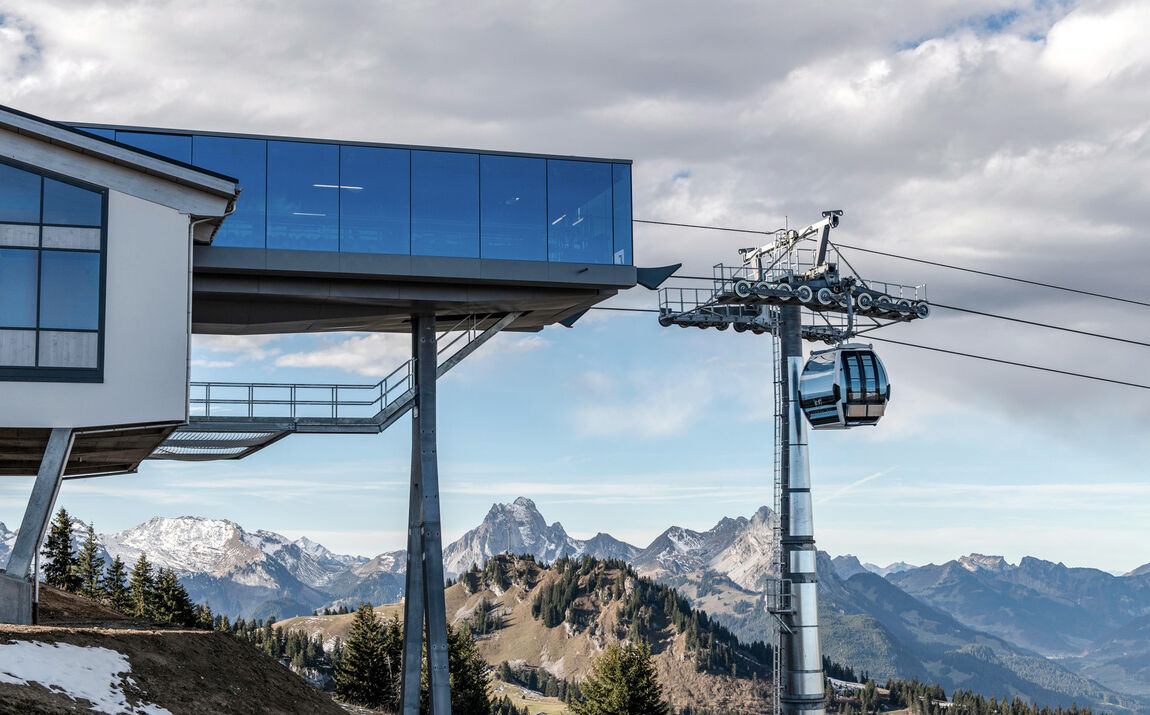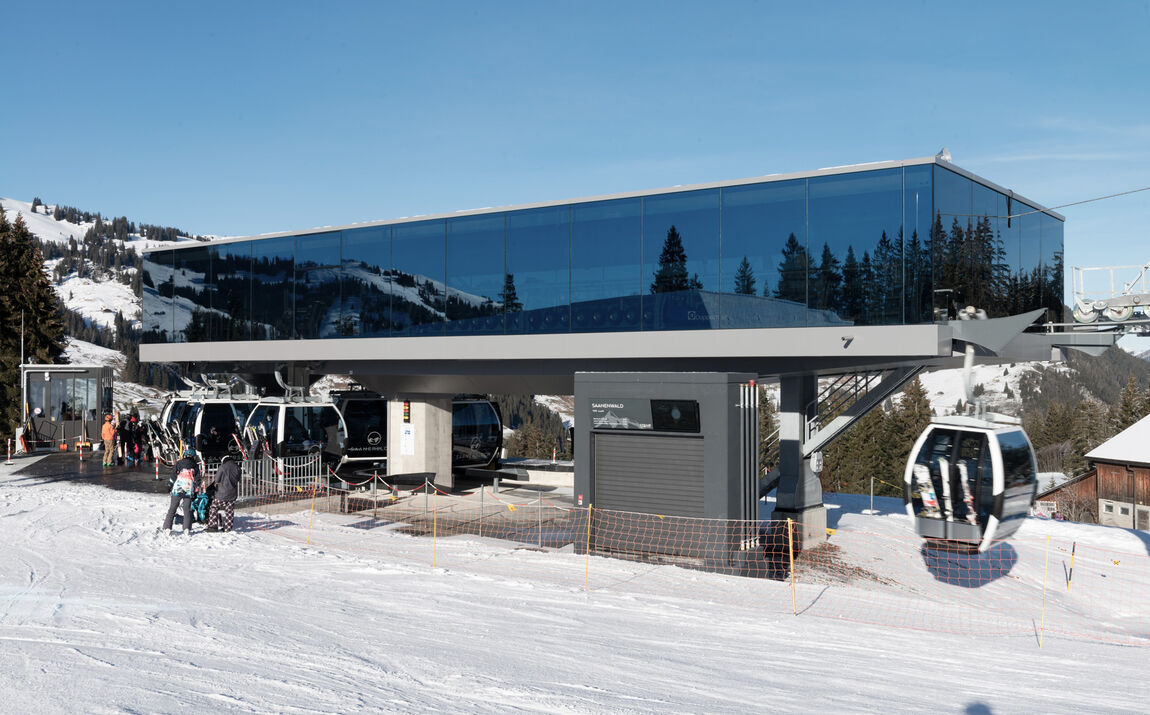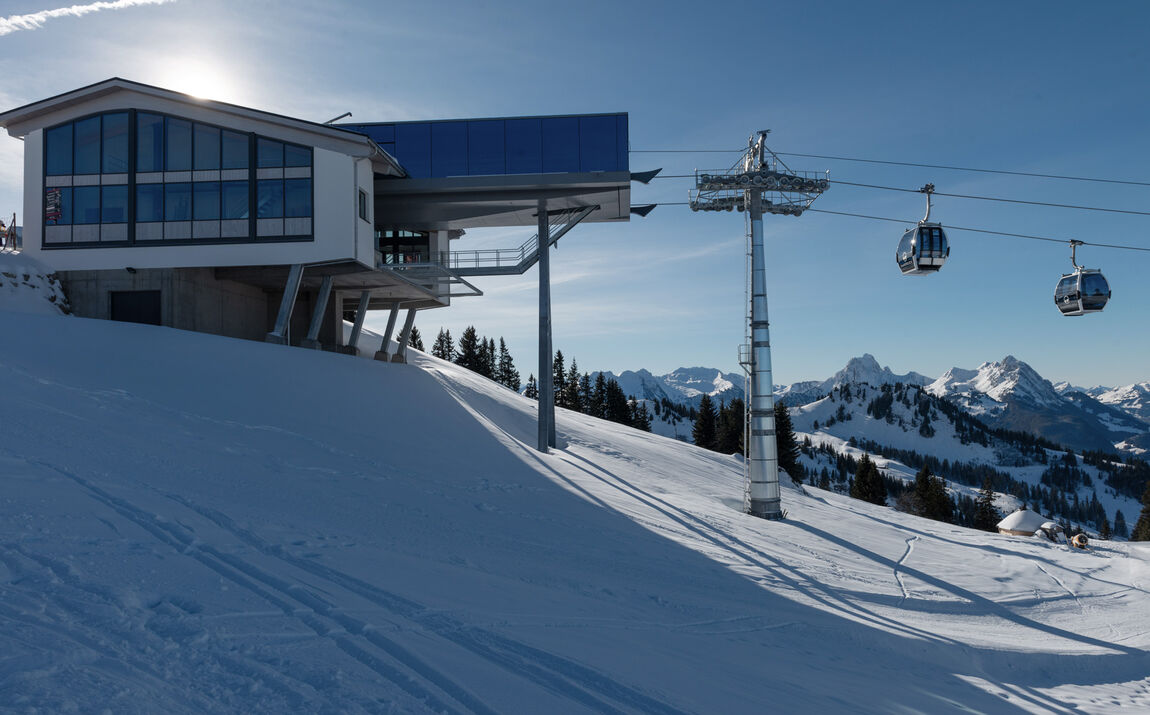Making technology visible
The Saanenmöser-Saanerslochgrat gondola ropeway from cable car manufacturer Doppelmayr/Garaventa is the first D-Line cable car in Switzerland – very quiet in operation, high-quality in design and time-saving in maintenance. In order to underline this special cable car technology with an outstanding architecture, the entire technology was housed in a cube with corrugated sheet metal roof and glass facade, thus making it visible to the visitors. This was associated with major static challenges: Normally, cable car roofs are made of curved acrylite glass, which has the advantage that the snow can slip off sideways. The remaining snow load on the roof is therefore rather low. However, due to the cubic shape of the glass construction foreseen by the Stuttgart-based planners, the snow remains on the entire roof and thus entails a much higher overall load. As a result, the roof can deflect up to 7 cm.
Masterpiece of statics
Such a high degree of deflection required completely new ways of mounting the glass: In order to safely absorb the enormous loads, the panes are glued to a profile at the top and bottom edge of the glass – with two decisive advantages: On the one hand, the prefabricated components can be mounted simply, quickly and independent of the weather. On the other, they are individually hung on the roof like a picture hanging from the wall. This allows each facade element to slide up and down independently of its neighbour. The glass panels of the facade have a standard dimension of 3.13 x 2 m, a maximum dimension of 3.13 x 2,26 m and a correspondingly high weight. As a result, this globally unique glass support at the interface between glass and metal only worked through high-quality glass bonding. In order to have the right glass available for this demanding construction task, the responsible persons turned to Glas Marte. Our company is one of the leading European glass specialists and offers an extensive range of different glass solutions in combination with sound advice. For the three cable car stations, we supplied a total of approximately 800 m² of laminated safety glass from two toughened safety glass types. Instead of the usual PVB intermediate foil, Glas Marte used a Sentryglas-plus special foil to ensure that the glass withstands the adverse weather conditions even on the highest mountains. The special foil is made of a thermoplastic (ionoplast) that is up to five times stronger and a hundred times stiffer than the conventional LSG intermediate layers. Thus, Glas Marte was able on the basis of the constructive solution and the improved materials to supply the first standard structurally glazed system that can withstand very large vertical deformations.
LED media technology
The glass used at the cable car stations has a special colour, which bears the melodious name Guardian SunGuard HD Royal Blue 20 and is very rarely used in Europe. However, it fits in perfectly with the design of the gondolas and gives the glass cubes that surround the cable car technology an elegant appearance. If required, they can be retrofitted with LED media technology. For example, the mountain railway operator can present large advertisements on the facade or convey other information.




